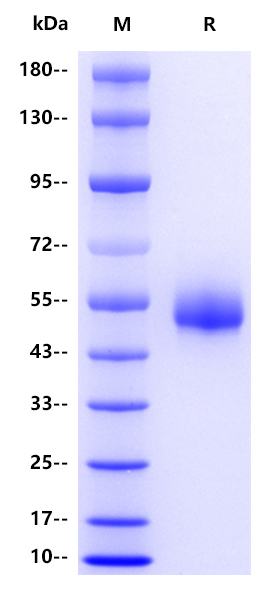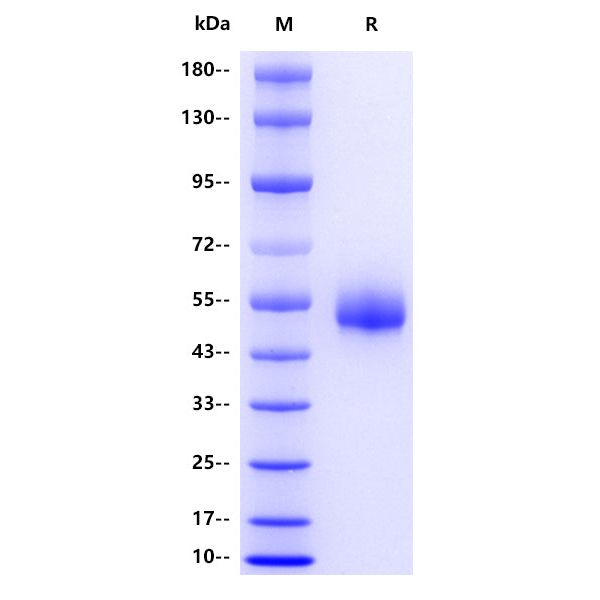2μg(R: reducing conditions)
Product Details
Product Details
Product Specification
| Species | Bovine |
| Synonyms | Pregnancy-specific protein B (PSP-B) |
| Accession | Q29432 |
| Amino Acid Sequence | Protein sequence(Q29432, Arg54-Val380, with C-10*His) |
| Expression System | HEK293 |
| Molecular Weight | Theoretical:38.4kDa Actual:50kDa |
| Purity | >95% by SDS-PAGE |
| Endotoxin | <1EU/μg |
| Tag | His Tag |
| Physical Appearance | Lyophilized Powder |
| Storage Buffer | Lyophilized from a 0.2 μm filtered solution of 0.2M PBS, 1mM EDTA, pH7.4. |
| Reconstitution | Reconstitute no more than 1 mg/mL according to the size in deionized water after rapid centrifugation. |
| Stability & Storage | 12 months from date of receipt, -20 to -70 °C as supplied. 6 months, -20 to -70 °C under sterile conditions after reconstitution. 1 week, 2 to 8 °C under sterile conditions after reconstitution. Please avoid repeated freeze-thaw cycles. |
Background
PAG constitute a group of pregnancy-specific proteins secreted by the chorionic epithelium (trophectoderm) of the placenta. The proteins whose cDNA sequences have so far been identified are bovine and ovine PAG1, bovine PAG2, porcine PAG1 and PAG2, and equine PAG. bPAG1, also known as pregnancy-specific protein B, becomes detectable in maternal blood soon after implantation is initiated and can be used to diagnose pregnancy. The synthesis of bPAG1 is localized to a subpopulation of binucleate cells within the trophectoderm , which probably have an endocrine function, since they possess secretory granules that contain the hormone placental lactogen and PAG1. As implantation is initiated these binucleate cells migrate from the trophectoderm and fuse with uterine epithelial cells. They then release the contents of their secretory granules directly into the maternal system.
Picture
Picture
SDS-PAGE



